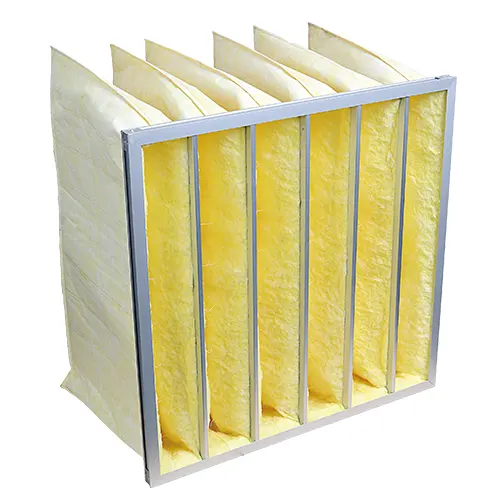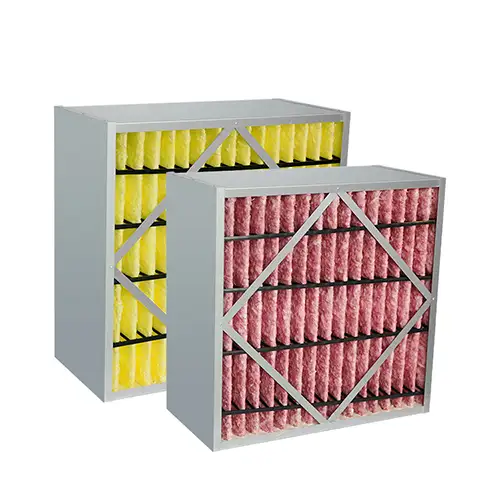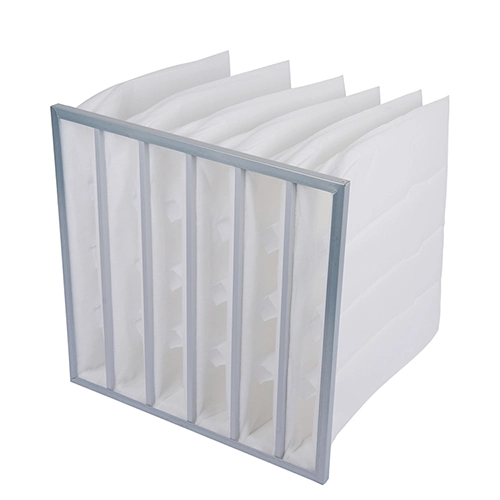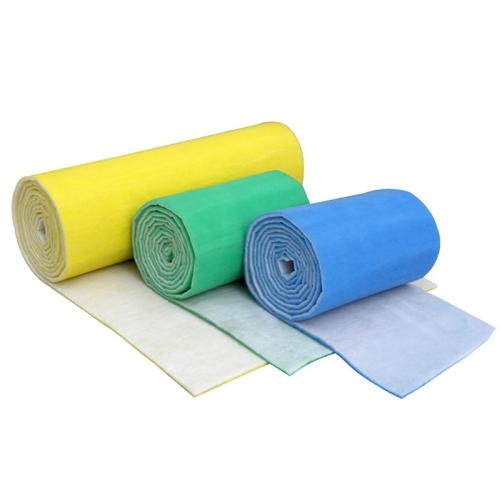FAQs About V-Bank Filters: Everything You Need to Know
As air quality becomes an increasingly important concern in both commercial and industrial settings, the need for efficient air filtration systems has grown. One solution that stands out is the V-bank filter. These filters are known for their high efficiency, durability, and ability to handle large volumes of air.
This guide addresses some of the most frequently asked questions about V-bank filters, including how they work, their benefits, where they are commonly used, and how to maintain them. Whether you’re looking to optimize your HVAC system or simply want to learn more about air filtration, this blog has you covered.
1. What Are V-Bank Filters?
Definition & Design
V-bank filters get their name from their distinctive V-shaped configuration. Unlike traditional flat filters, V-bank filters consist of multiple panels arranged in a V-shape, which significantly increases the surface area available for filtration. This design allows them to capture a higher volume of airborne particles without increasing resistance.
Key Differences from Traditional Filters
High Efficiency: The V-bank design optimizes airflow, enabling the filter to capture more contaminants.
Space-Saving: Despite having more filtration media, V-bank filters are compact and fit well into most HVAC systems.
Longer Service Life: The increased surface area allows these filters to last longer than standard panel filters, reducing the frequency of replacements.
Key Benefits:
· Superior filtration efficiency, capturing dust, allergens, and bacteria.
· Increased airflow capacity while maintaining low pressure drops.
· Extended lifespan due to the larger filter surface area.
2. How Do V-Bank Filters Work?
Optimized Airflow
The V-shaped design of these filters allows air to flow smoothly through the HVAC system. The multiple layers of filter media capture particles at various stages, improving the overall efficiency of the filtration process.
Multi-Layer Filtration System
Each layer of the V-bank filter captures different sizes of airborne particles, from large dust particles to microscopic pollutants like pollen and mold spores. This layered approach not only improves indoor air quality but also extends the life of the filter by distributing the load across multiple surfaces.
Impact on Indoor Air Quality (IAQ)
By efficiently trapping airborne pollutants, V-bank filters help maintain optimal IAQ in spaces like hospitals, data centers, and offices. This is especially important in environments where air purity is critical to health and productivity.
3. Where Are V-Bank Filters Typically Used?
Commercial Buildings
V-bank filters are commonly used in office buildings to ensure a steady supply of clean air, improving employee comfort and productivity.
Healthcare Facilities
In hospitals and clinics, maintaining high air quality is crucial for patient safety. V-bank filters are used to filter out airborne pathogens, ensuring a clean environment.
Data Centers
Dust and debris can damage sensitive electronic equipment. V-bank filters help maintain a dust-free environment, reducing the risk of hardware failure.
Cleanrooms
Industries like pharmaceuticals and electronics manufacturing rely on cleanrooms with tightly controlled air quality. V-bank filters are essential for maintaining the purity of the air in these spaces.
4. How Often Should V-Bank Filters Be Replaced?
Factors Influencing Replacement Frequency
Environmental Conditions
Dusty or polluted environments require more frequent replacements.
HVAC System Usage
Systems that run continuously may need filter replacements every 6-12 months, while those with intermittent use can last up to 18 months.
Signs It’s Time to Replace Your V-Bank Filter:
· Reduced airflow or uneven air distribution.
· Increased energy bills due to reduced system efficiency.
· Visible dirt buildup on the filter media.
5. Are V-Bank Filters Energy Efficient?
Yes, V-bank filters are designed to be energy efficient. Their V-shaped configuration minimizes pressure drop, allowing air to flow more easily through the filter. This reduces the workload on your HVAC system, lowering energy consumption and operating costs.
Reduced Pressure Drop
The design optimizes airflow, making it easier for the HVAC system to circulate air.
Cost Savings
By improving airflow, V-bank filters help reduce energy bills, making them a cost-effective solution in the long run.
6. Can V-Bank Filters Be Used with Other Air Filters?
Yes, V-bank filters can be used alongside other types of filters to achieve comprehensive air filtration:
Prefilters
Prefilters trap larger particles and prevent them entering the next stage of filtration, thus protecting the more expensive filters downstream.
HEPA Filters
When used with HEPA filters, V-bank filters can provide an extra layer of protection against fine particles and allergens.
Activated Carbon Filters
Combining V-bank filters with activated carbon filters is effective for removing odors and chemical pollutants.
Pocket Filters
Using pocket filters in conjunction with V-bank filters can enhance dust-holding capacity, particularly in industrial settings.
7. How to Properly Install and Maintain V-Bank Filters?
Step-by-Step Installation Guide:
1. Check Airflow Direction: Ensure that the arrow on the filter aligns with the HVAC system’s airflow.
2. Secure the Filter: Make sure the filter is properly seated to prevent air bypass.
3. Inspect the Seal: Check for any gaps that could reduce filtration efficiency.
Maintenance Tips:
· Clean the filter housing regularly to prevent dust buildup.
· Inspect the filter every 3-6 months to check for clogs or damage.
· Replace filters as needed to maintain optimal system performance.
8. What Are the Common Mistakes When Using V-Bank Filters?
Common Mistakes:
1. Improper Installation: Installing the filter backward reduces its efficiency and can increase system strain.
2. Neglecting Regular Maintenance: Failing to inspect and replace filters can lead to poor indoor air quality and higher energy costs.
3. Using the Wrong Filter Type: Ensure that the V-bank filter you select is compatible with your HVAC system to maximize efficiency.
How to Avoid These Mistakes:
· Always check the filter’s airflow arrow before installation.
· Set a maintenance schedule to regularly inspect and replace filters.
· Consult with an HVAC professional to choose the right filter for your system.
Conclusion
V-bank filters are an essential component of modern HVAC systems, providing high-efficiency air filtration while optimizing energy use. By using V-bank filters, you can improve indoor air quality, reduce energy costs, and extend the life of your HVAC system.
If you’re looking to upgrade your air filtration system or need guidance on selecting the right filter, contact our air filter experts today.
Our team of professionals can help you find the best solution for your needs.





